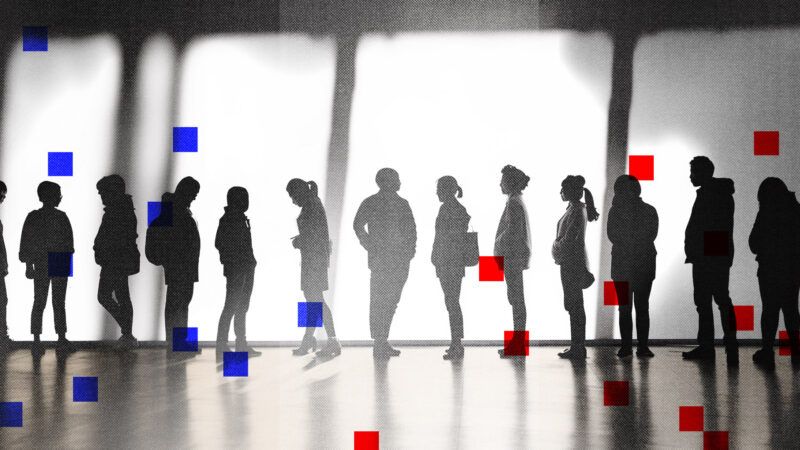Was 2024 the Gender Gap Election?
Men and women vote differently, but 2024's gender gap was far from unique.

The lead-up to the 2024 election seemed to portend a historic gender gap in the results, with women assumed to swing heavily to Harris while men would leap to Trump.
"Heightened concerns about reproductive rights, ignited by the Supreme Court's Dobbs decision, kickstarted a widening of the gender gap as women flocked to support Democrats in the 2022 midterm elections," reads one Politico analysis released in August. "The current presidential matchup—featuring the vice president's historic candidacy and Donald Trump, who is viewed very unfavorably by women—appears to be supercharging this trend."
"It's the battle of the sexes and it's no game," Quinnipiac University polling analyst Tim Malloy said in a statement last month. "There is a glaring gap in Michigan and Wisconsin between the number of women supporting Harris and the number of men supporting Trump. On November 5th, it will all come down to who shows up."
One Harris ad encouraged women to vote Democratic in defiance of their Republican husbands.
"In the one place in America women still have the right to choose, you can vote any way you want and no one will ever know," Julia Roberts narrates over footage of a woman—in a rhinestone-encrusted American flag baseball cap no less—hovering her pen over the Trump box on her ballot, before locking eyes with another woman and filling in the bubble for Harris.
However, exit polls indicate that the predictions of an unprecedented gender divide didn't come to fruition. Yes, there was a large gap in how men and women voted, but it was a similar divide to that seen in previous elections. According to CNN's exit poll, there was around a 10-point gender gap between men and women voting for Trump, with 42 percent of men and 53 percent of women voting for Harris while 55 percent of men and 45 percent of women voted for Trump. But these numbers aren't shocking.
The gap was larger for Latino and black voters than it was for white voters. Sixty percent of white men and 53 percent of white women voted for Trump. Meanwhile, there was a 14-point gap in black men's and women's support for Harris, with 21 percent of black men and 7 percent of black women voting for Trump. Latino voters had a 17-point gender gap, with 55 percent of Latino men and 38 percent of Latina women supporting Trump.
But while there is certainly a gulf between the candidates preferred by men and women, these numbers are hardly unprecedented. In 2020, exit polls found a gender gap between men and women's votes of between 9 and 12 percentage point. In 2016, polls found a roughly 8- to-11-point gap.
Even if men and women voted for Democrats and Republicans at roughly the same proportions as they have for the past several elections, it is hard to miss the gendered messages each campaign sent out.
While the Harris team aired cringeworthy ads depicting working-class men declaring that they're man enough to "support women," cry at movies, and "not ban young women from reading Little Women," Vice President-elect J.D. Vance made one of the most well-known gaffes of the election season when footage emerged of him griping about "childless cat ladies."
In their rhetoric, the Democrats are incredibly becoming a party interested in appealing primarily to women, while Republicans are shifting their messaging to broadly appeal to men. However, this strategy doesn't seem to have massively expanded existing gender gaps.


Show Comments (48)